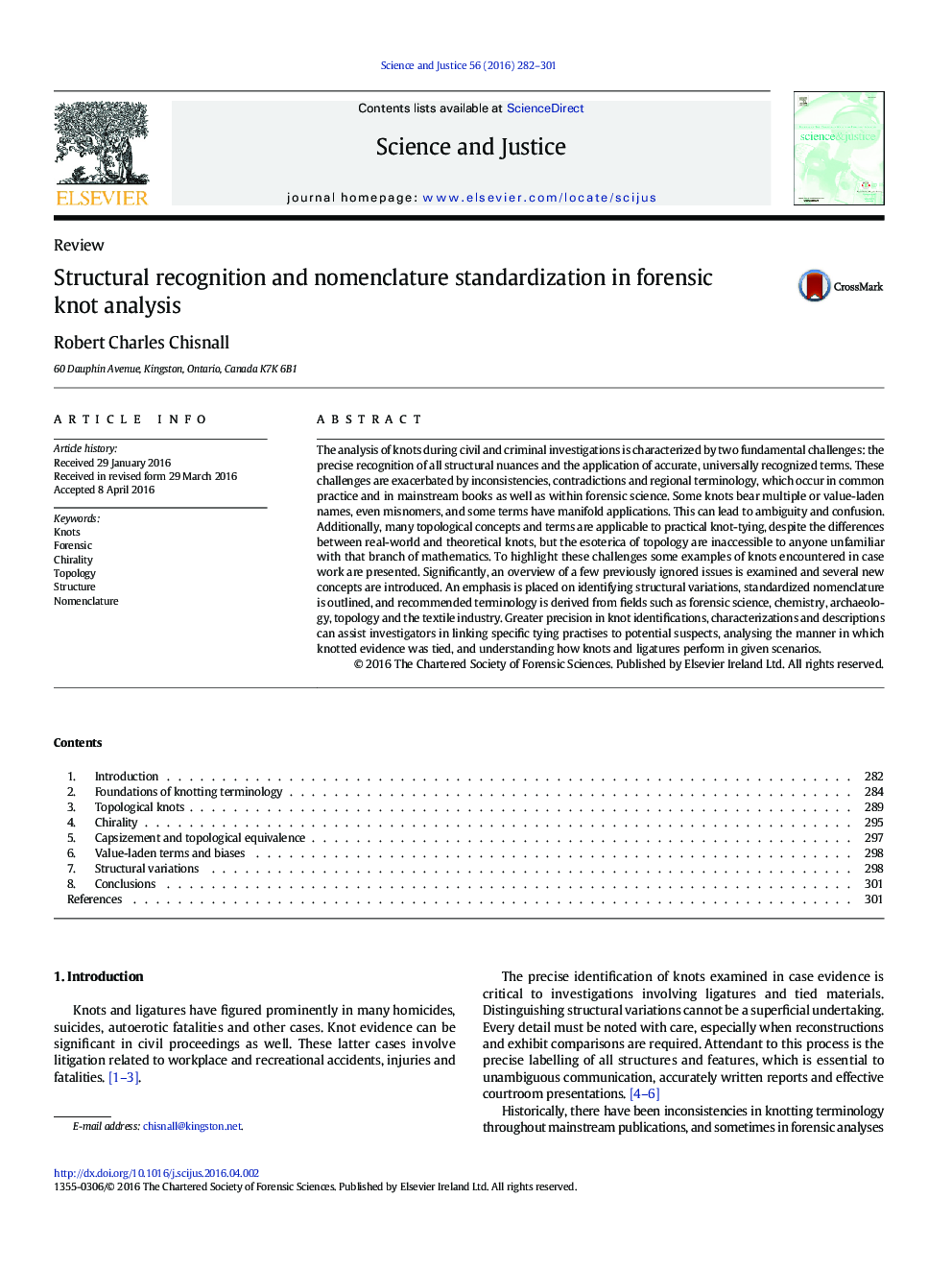| Article ID | Journal | Published Year | Pages | File Type |
|---|---|---|---|---|
| 106862 | Science & Justice | 2016 | 20 Pages |
•Ambiguous terms and concepts employed in forensic knot analysis are clarified.•The importance of precise knotting morphology is outlined.•Examples of hitherto poorly and undocumented structures are detailed.•Applicable topological concepts and tools are explained.•The dangers of conceptual bias and value-laden terminology are emphasized.
The analysis of knots during civil and criminal investigations is characterized by two fundamental challenges: the precise recognition of all structural nuances and the application of accurate, universally recognized terms. These challenges are exacerbated by inconsistencies, contradictions and regional terminology, which occur in common practice and in mainstream books as well as within forensic science. Some knots bear multiple or value-laden names, even misnomers, and some terms have manifold applications. This can lead to ambiguity and confusion. Additionally, many topological concepts and terms are applicable to practical knot-tying, despite the differences between real-world and theoretical knots, but the esoterica of topology are inaccessible to anyone unfamiliar with that branch of mathematics. To highlight these challenges some examples of knots encountered in case work are presented. Significantly, an overview of a few previously ignored issues is examined and several new concepts are introduced. An emphasis is placed on identifying structural variations, standardized nomenclature is outlined, and recommended terminology is derived from fields such as forensic science, chemistry, archaeology, topology and the textile industry. Greater precision in knot identifications, characterizations and descriptions can assist investigators in linking specific tying practises to potential suspects, analysing the manner in which knotted evidence was tied, and understanding how knots and ligatures perform in given scenarios.
